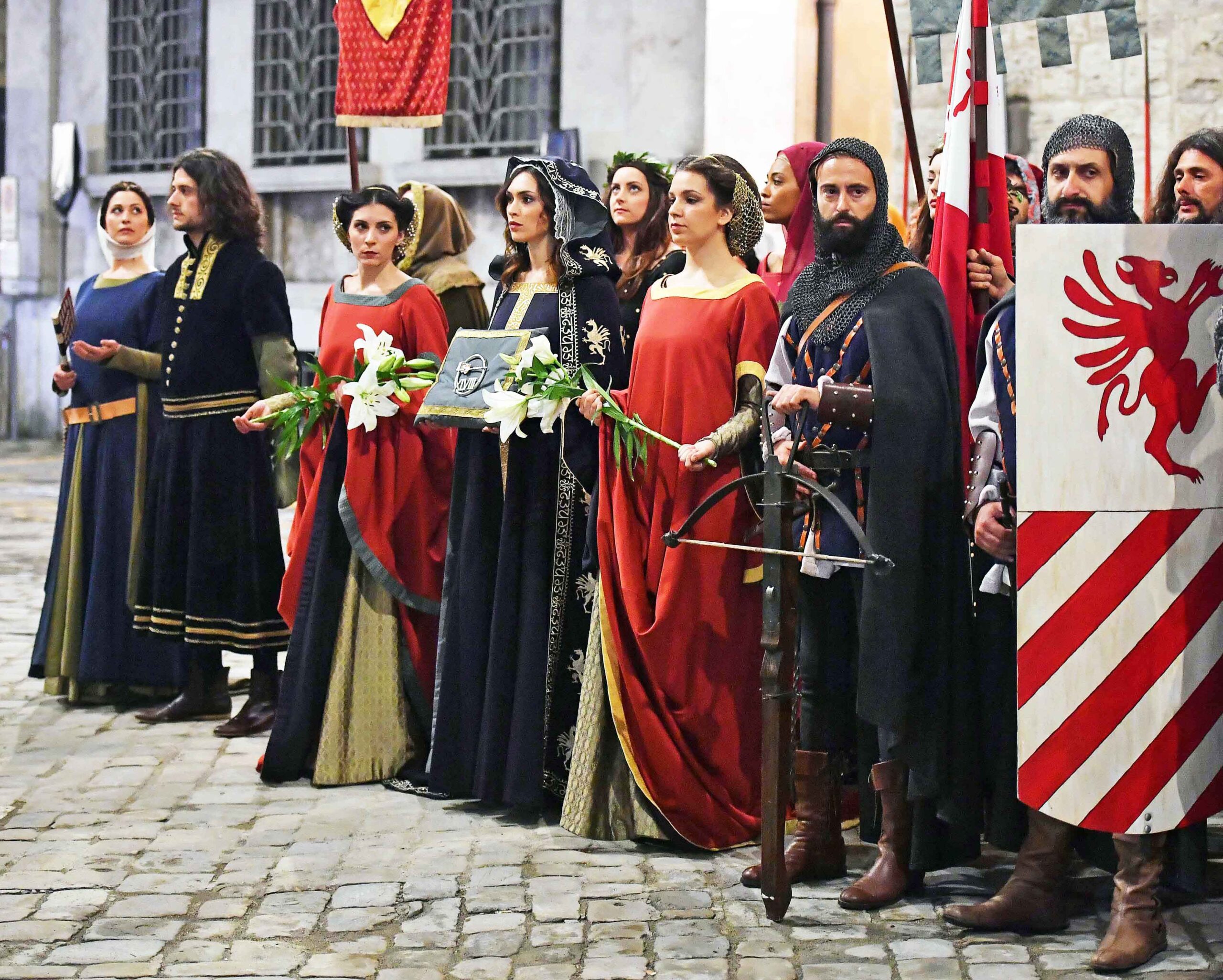Within the beautiful region of Umbria, the province of Perugia seems to get all of the acclaim. It is twice the size of its smaller neighbor, Terni and has a wealth of cultural, artistic and culinary features. Yet Terni also contains its own individual charms and rich history. Much of the province borders Lazio, with Perugia to the north and Tuscany to the northwest.
In the 2nd millennium BC, the province was occupied by a population called Umbri. With the rise of the Etruscan civilization, both peoples fought hard for the rule of the Tiber valley. In 299 BC, Roman legions began the invasion of Umbria and over the next century, the people assimilated into the Roman culture. In 571, the Lombards, after invading the Po Plain, went down the Apennines and in 575, founded the Duchy of Spoleto in what is now Umbria and the neighboring areas; this state remained formally independent until 1250.
According to legend, Amelia is the oldest town in Umbria. The town lies in the southern part of the province, on a hillside overlooking the rivers of Tiber and Nera. The original limestone town walls are well preserved and have four main gates. Porta Romana, the southernmost gate, is the main entrance to the town. Inside the walls, the medieval town is well preserved with the Piazza del Duomo at the center. Both the cathedral and the 100 foot tall tower, Torre Civica, are located in the piazza.
One of the most important and richest Etruscan town is that of Orvieto. Rising majestically above the cypress-dotted Umbrian plains, the town is situated on the flat summit of a large butte of volcanic tufa, a setting among the most dramatic in Europe.
Orvieto has two distinct parts – the old town, located on the hilltop and the new town below. Entering the historic section is a step back in time, as it is both perfectly preserved and nearly traffic-free. Strolling along the narrow medieval alleys, the area suddenly opens and visitors find themselves looking at the astounding façade of the Orvieto Duomo. The cathedral soars seven stories into the sky and is widely considered to be the most glorious example of Italian Gothic architecture in the world. Its many architectural features include ribbed vaults, clustered columns, wheel windows and spires. The façade of the Duomo is remarkably ornate with mosaics, stained glass and ornate stonework, with bas-reliefs on the piers depicting Biblical stories from the Old and New Testaments.
Inside, the cathedral’s majestic interior contains an optical illusion – it is wider at the back and narrower at the altar, which makes the nave appear longer than it is. One of the highlights in the cathedral is the Chapel of San Brizio, featuring Luca Signorelli’s frescoes of the Day of Judgment and Life after Death. Its large organ, containing 5,585 pipes, was designed by Ippolito Scalza and Bernardino Benvenuti in the 15th century.
Behind the Duomo is a complex of medieval palaces called Palazzi Papali. The group of buildings includes the Bishop’s Palace, which houses the National Archaeological Museum containing the Golini Tombs which date from the 4th century BC. Adjacent to the Bishop’s Palace is Palazzo Soliano, also known as the Palace of Boniface VIII. The public spaces of the palace consist of two large rooms; the lower hall houses the Museo Emilio Greek, which has 32 bronze sculptures and 60 graphic works of the artist who was responsible for the bronze doors of the Cathedral of Orvieto and the upper hall, home to the Museo dell’Opera del Duomo, which houses sculptures and works from the 13th century onwards.
During the sack of Rome in 1527, Pope Clement VII took refuge at Orvieto. Fearing a siege against the town and a water shortage, Clement commissioned the Pozzo di S. Patrizio (Well of St. Patrick). It is 175 feet deep, 45 feet wide and 496 steps down. It continues to impress engineers to this day. This extravagant well has two spiral stairways leading down to a bridge from which people could scoop up water. Even today, when faced with a difficult task, Italians will say, “È come scavare nel pozzo di San Patrizio” (It is like digging St. Patrick’s Well). For those who travel to the town, no visit to Orvieto is complete without enjoying its famous Classico wine. The volcanic soil of the area is very rich and grape production has thrived here since the time of the Etruscans.
One of the other fascinating attractions of Orvieto was for many years a well-guarded secret. Under the surface is a maze of 440 tunnels and caves running beneath the entire town. They were carved from the soft rock as a means of escape during times of siege. All of the exits emerged at safer places outside and well away from the city walls.
To the southwest of Orvieto is the ancient hill town of Narni. It is located at the geographical center of Italy, in fact on the outskirts of the town is a stone marking the exact spot. The town is a well-preserved example of medieval architecture and is famous for once having had one of the largest Roman bridges, Ponte d’Agost. Standing almost 100 feet high, only one arch of the once great structure still remains. Like Orvieto, Narni also has an extensive underground, but its rediscovery only occurred in 1979. The underground excavation lies directly under the Church of San Domenico. There is even a path that leads from the church into the underground, believed to be used by the Dominican monks to visit their prisoners during the Holy Inquisition. Visitors should then proceed from the depths below ground to the summit of the Rocca Albornoz, an immense fortress built in the 14th century. Now restored, it provides marvelous views of the surrounding countryside.
Narni is also famous for the Corsa all’Anello – the Race to the Ring, which honors the town’s first Bishop, Santo Giovenale. The festival lasts for more than two weeks and is based on ancient traditions, games and rituals. This year, it began on April 24th and continues through May 12th. The most famous of the numerous competitions is the race itself. It takes place in the center of the town, where like knights of old, horseback riders at full gallop attempt to pierce a small ring suspended by wires with their lance. It heralds back to the medieval joust, but there is far more to the event, with processions, pageantry, food and a pre-Renaissance atmosphere that attracts visitors from all over Europe and beyond.
Today, Terni, the capital of the province, is a modern industrial city, but the remains of an earlier time are all around. Its Basilica contains the tomb of St. Valentine and is an important destination for pilgrims. Each year, the city holds an elaborate celebration for its patron saint, culminating in his feast day on February 14th.





